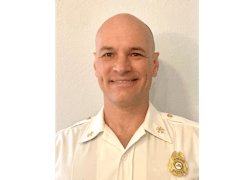We love our traditions and heritage in the fire service. One nearly universal part of our tradition is our rank insignia, which typically are “tools of the trade.” Fire service ranks and their symbols tie directly to fireground tasks, tactics and strategies.
Firefighter to captain
Entry-level firefighters usually wear rank insignia that names their relationship to a department (e.g., the departmental abbreviation) or symbolizes the tools of a firefighter, such as an ax, pike pole and ladder.
Similarly, the driver/engineer/operator, typically has some indication of responsibility for all of the tools that are carried on the apparatus.
The promotion to fire officer comes with a single bugle or trumpet, usually for a lieutenant. This is because an officer must be able to, shall we say, speak above the crowd to the members of the crew to communicate with them. Thus, the bugle is the “tool” for leadership.
Traditionally, the more senior an officer, the more bugles one has. Such individuals are expected to communicate with and point the way to multiple crews, demographics and even agencies. We often designate the two-bugle officer as a captain who has responsibility for a station with multiple crews. I like to think of the second bugle as a reminder of a second line of communication in two respects. First, captains are responsible for multiple crews and bystanders at an emergency scene, so they need multiple tools of communication to perform their job. Second, station officers aren’t only responsible for crews but also for communities. A station represents a presence in the community, and officers have an increasing responsibility to the nonemergency role there.
Chiefs
In many departments, promotion to chief officer includes a rotation of the bugles (so that two are crossed) and/or the addition of a third bugle. Crossing the bugles signifies an intensification or amplification of communication. What the chief says carries increased weight. A third bugle suggests a third line of communication, often to the administration above and around the chief. A chief is responsible for multiple crews, for the local community and for representing crews within the agency.
A fourth bugle often is reserved for deputy chiefs at the administration’s highest level. They retain the bugles that correlate to crew emergency communication, community safety and agency administrative communications and add a bugle that represents interagency communications.
Traditionally, the fire chief wears five bugles. They indicate the absolute responsibility to communicate to keep crews safe, to be present in the community, to relay information within the agency, to coordinate with other agencies and to speak with final decision-making authority.
Speaking and listening
There is much to ponder about the symbols that we have for our rank insignia and what they say about leadership. Particularly on an emergency scene, the leader must use tools well and communicate to responding crews, victims and bystanders. Although the bugle, or trumpet, represents speaking or broadcasting a message, a bugle also represents a funnel. This suggests the importance of also listening: Put the bugle to your mouth to speak to more people; put the bugle to your ear to hear more people. Each bugle that’s worn asks, “To whom will you speak with this bugle?” At the same time, it asks, “To whom will you listen?”
Insignia significance
Leadership is fundamentally the exercise of virtue to influence others. This always involves clear communication. Scene size-up, strategies and commands must be communicated effectively in an emergency. In non-
emergencies, communication remains important, too, because it establishes community.
Wherever you lead and whatever your rank, take time to reflect on the tools that you use. When you wear your uniform or when others address you by title, accept it as a challenge to lead at all levels and in all directions.

Thomas Humphries
Thomas L. Humphries Jr. is a career theology professor at Saint Leo University and volunteers in Pasco County, FL, serving as a district chief and a chaplain. He is a Florida state firefighter, EMT, fire officer and fire instructor in addition to having a PhD in early Christian theology.






